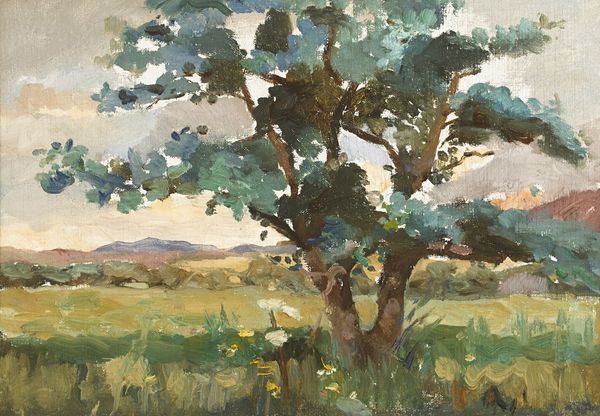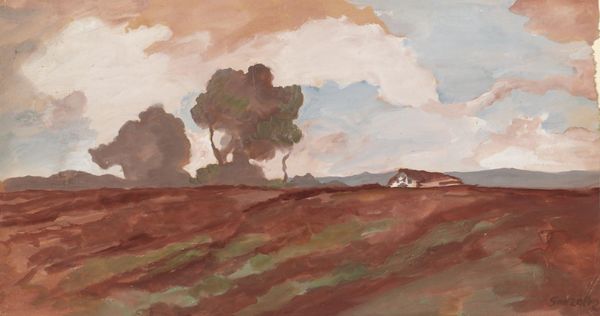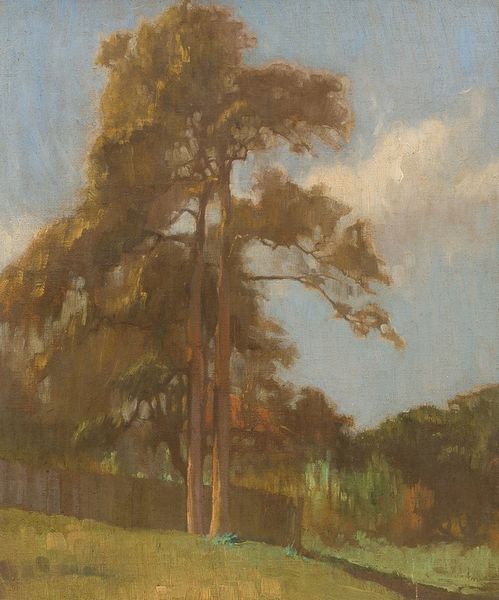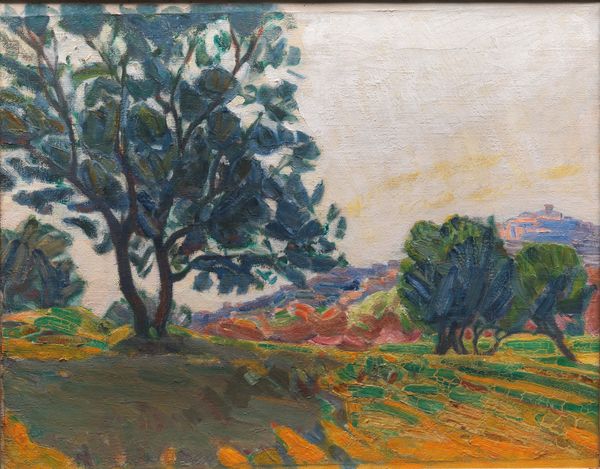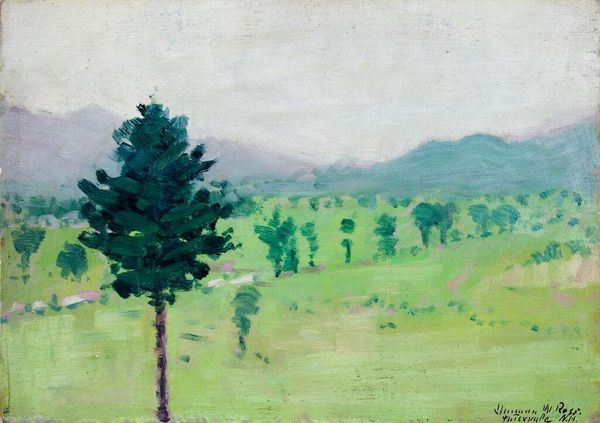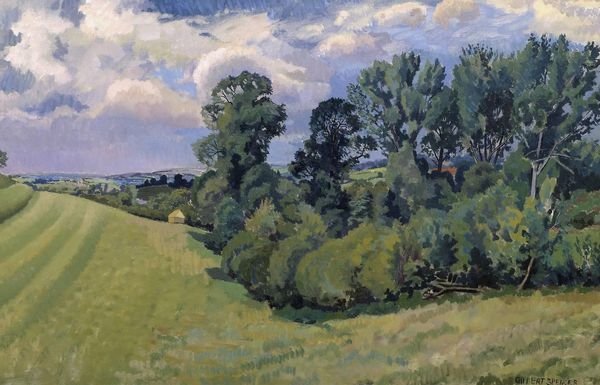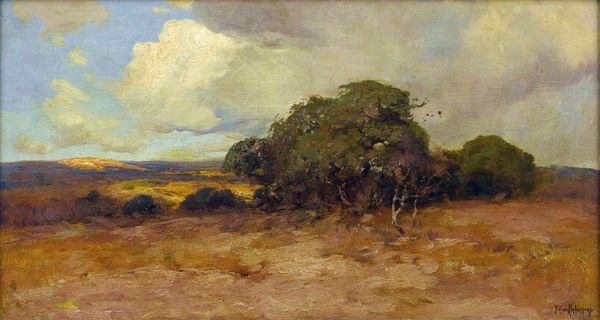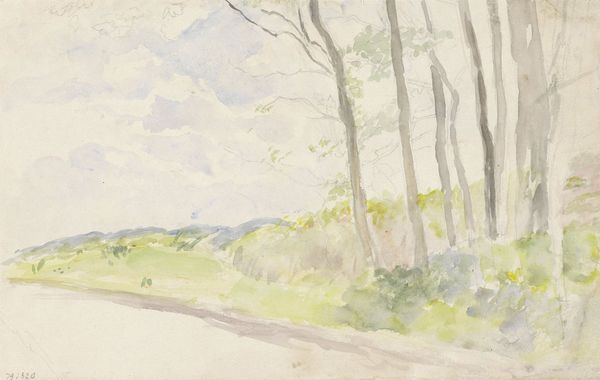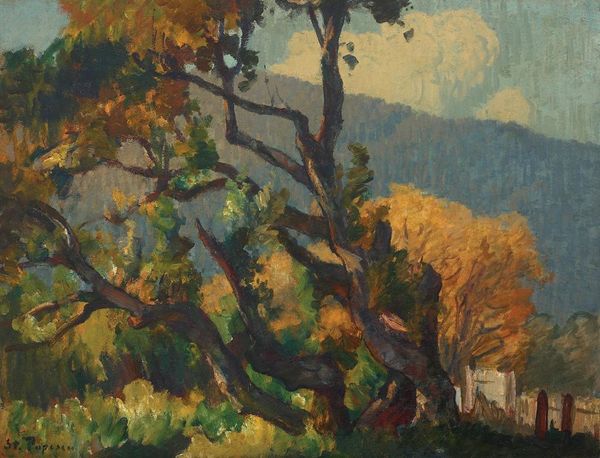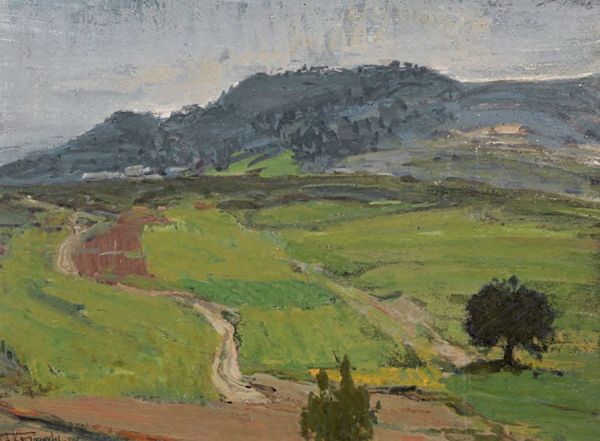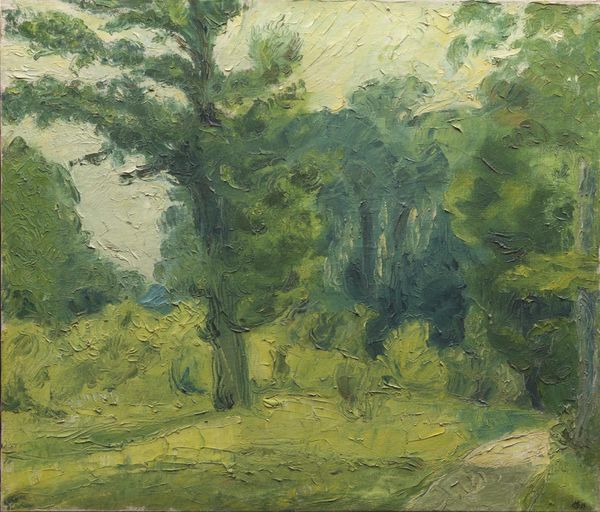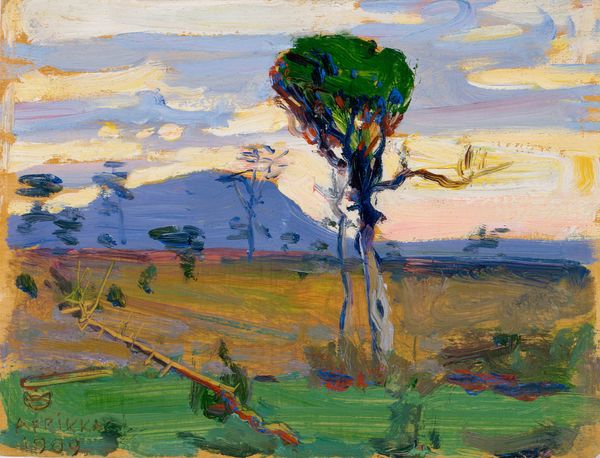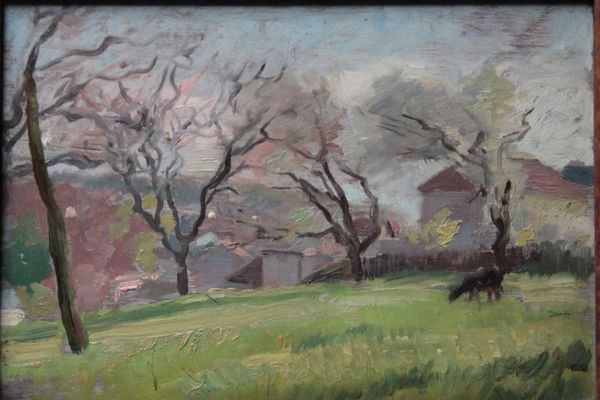
painting, plein-air, oil-paint, fresco, pastel
#
tree
#
contemporary
#
painting
#
impressionism
#
plein-air
#
oil-paint
#
landscape
#
impressionist landscape
#
fresco
#
oil painting
#
genre-painting
#
pastel
#
watercolor
#
realism
Copyright: Marjorie Acker Phillips,Fair Use
Curator: "Hayfield in Summer," created by Marjorie Acker Phillips. The artist beautifully captures a landscape scene in what appears to be oil. Editor: It strikes me as serene, almost dreamlike. The colors are soft and muted, which gives a sense of peace but also... melancholy. There's a haziness to the details. Curator: Absolutely. Phillips worked within the tradition of Impressionism, evident in her focus on light and fleeting moments. She was deeply committed to painting en plein-air. Her work offers insights into the early 20th-century American art scene and the role women played within that scene, pushing beyond limitations. Editor: That emphasis on plein-air connects this to a lineage of artists observing the natural world, but the almost somber tones – particularly in the sky – create a stark contrast with the idea of an idyllic, cheerful summer day. I keep thinking about what kind of labour is being rendered invisible here. Curator: Precisely! One could argue the muted tones capture a broader unease present during periods of industrial change, a sense of nostalgia for an agrarian past that’s quickly disappearing. The positioning of the haystacks becomes significant then. They're rendered in a soft palette. It can be a symbolic echo. Editor: And while the painting celebrates this very white rural space, we're left with asking, for whom exactly is the field being painted, and for whom are those hay bales being stacked? It makes me think about who gets left out of these representations of the American landscape and who is forced into hard labor instead of leisure. Curator: I find myself dwelling on the accessibility of landscape art more broadly. We also tend to forget who could, and perhaps could not, simply engage with landscapes in ways beyond working them. These are key layers to unpack when confronting works of this kind. Editor: This interplay between beauty and questioning helps us engage with our shared visual history more critically. Curator: Ultimately, Phillips gives us not just a scene but a historical fragment—inviting deeper reflection. Editor: Yes, inviting critical reevaluation of its place in art and history.
Comments
No comments
Be the first to comment and join the conversation on the ultimate creative platform.
